- Duration
- 10 days / 9 nights
- Price Per Person
- From $34,600
Papua New Guinea (PNG) is probably the most diverse yet least explored country in the Asia-Pacific region. This British Commonwealth country, which gained independence from Australia in 1975, was also once a German colony, and has long fascinated travelers and adventurers. By 2011 it had become the seventh fastest growing economy in the entire world, mainly due to its vast mining and natural resource industry.
PNG has over 600 islands and more than 800 different cultural groups that have a wide range of dialects, art, music, dance, fashion and architecture. Over 95 percent of the almost 6 million people are Christians, though many combine this faith with their indigenous animism. Seashells were the official currency until 1933. PNG is less than a tenth of the size of Australia but has just as many species of animals. This is a place where the kangaroos live in trees and the marsupials are plentiful.
PNG is physically spectacular, with lush rainforests, flooded deltas, pristine highlands, thick jungles, active volcanoes and picturesque mountains (the highest peak is 14,793 feet). Military historians will enjoy visiting various sites which saw fierce combat during World War II – especially around Rabaul. Destinations include Alotau, the Sing Sing festivals at Mount Hagan, Goroka, world-class diving in Madang, Simbai/Kaironk Valley, Ambunti, canoe trips on the Sepik River and the capital of Port Moresby.
Explore in-depth information, experiences and highlights by navigating to specific regions using the links below.
Port Moresby, Papua New Guinea
Port Moresby, Papua New Guinea
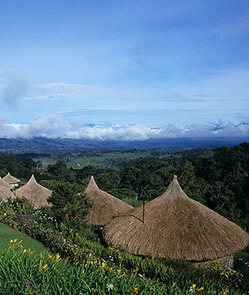
Nestled amongst the Doma Peaks near Tari, almost 7000 feet above sea level, is Ambua Lodge. An award-winning, eco-friendly lodge boasting magnificent views of the Tari Valley below, and the perfect base for encountering the famous Wigmen, the lodge consists of forty round houses set amongst landscaped gardens and built almost exclusively from natural materials. Each unit features 180-degree picture windows to soak in the view, en-suite bathrooms, and electric blankets and duvets for the cool highland evenings. Ambua has 24-hour, eco-friendly electricity, provided by its own hydroelectric power plant that generates clean, natural energy from a nearby mountain stream. The main lodge building houses the bar, dining and lounge areas and a cozy central fireplace.

Perched on the banks of the Sepik River, Ambunti Lodge provides basic accommodation and restaurant services. Guests may choose from twin or double rooms, and recent upgrades have resulted in air-conditioning and private bathrooms in each, making the rooms among the most comfortable available in the area. The lodge also features a generator to keep power going during a power-cut. Ambunti Lodge is the ideal base from which to explore the exotic and fascinating Sepik region, with its rich tribal cultures.
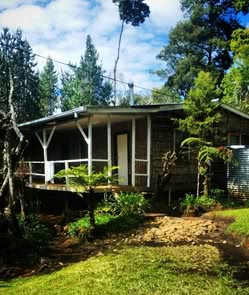
Mount Wilhelm, Papua New Guinea
Papua New Guinea's highest peak reaches a towering 4509 meters above sea. On the path up to this sky piercing point rests Betty’s Place at 2790 meters. Nestled in with the surrounding scenery, the lodge furnishes beautiful views of rivers and surrounding nature from its 4 double rooms. Electricity, hot-water showers, and meals are provided. Produce is sourced from a nearby local farm and guests are invited to cook on their own. In business for over 20 years, the staff at Betty’s Place possess a wealth of knowledge and the lodge's location is perfect for guests seeking to climb up Mount Wilhelm, enjoy bird watching, or hike throughout the region.

The Bird of Paradise is the best hotel in Goroka, and while hardly posh, it is relatively clean and comfortable. It has 52 rooms, cable TV, IDD telephones, laundry, room service, an outdoor heated pool and gym. The Lahani Restaurant offers exotic dishes such as crocodile, buffalo, venison, and pigeon as well as fresh Highland vegetables and fruit. The hotel also has a more casual café with outdoor dining, the Deck Bistro, and a bar called Birdy's Piano bar. The Bird of Paradise is conveniently located in the center of town near the J.K. McCarthy Museum, Raun Raun Theatre and Mount Gahavisuka Provincial Park, an 8,000-acre park featuring walking trails, a scenic lookout, and a variety of native flora and fauna. Amenities include an outdoor heated pool, game room, fitness center, on-site squash club, business center and broadband Internet access. The hotel is only five minutes from the Goroka Airport (GKA).

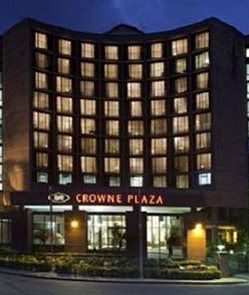
Port Moresby, Papua New Guinea
The Crowne Plaza is Papua New Guinea's only proper business-class hotel and provides all the necessary comforts for international travelers. Situated on a hilltop in the heart of the business district, the hotel has panoramic views of the Coral Sea and surrounding inland areas. There are 157 well-appointed, modern rooms and suites, including an Executive Club lounge floor. For dining, there are two restaurants - Rapala Grill, a fine-dining restaurant with a menu of Continental cuisine and grill specialties, and The Cafe, a casual spot for all-day dining. There are also two bars - The Heritage, a lounge serving fine cigars and cognacs, and the Pondo Tavern. Other amenities include a well-equipped fitness center, an outdoor pool, a full-service business center, and available wired and wireless high-speed Internet. The Crowne Plaza is a 15-minute drive from Port Moresby's Jackson's International Airport (POM).
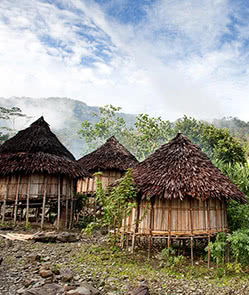
A village homestay in Papua New Guinea provides the ultimate culturally-immersive experience, though it is not for everyone. This type of accommodation is quite basic, without electricity or modern amenities, but there's no more authentic way to be a part of local village life. Beds are light mattresses on the floor, the bathroom has a pit toilet and an eco-friendly bucket bath. Breakfast is whatever your host family has prepared for you – usually sago and taro. Village life in rural Papua New Guinea remains largely unchanged over the centuries, and a homestay affords unparalleled insight into everyday village rituals.
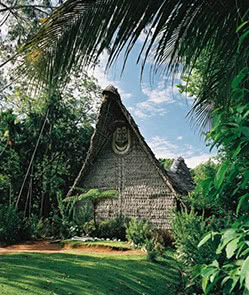
Sepik Region, Papua New Guinea
Karawari is a striking, rustic-style wood and bamboo lodge located in the heart of the rainforested Sepik region, home to numerous indigenous tribespeople. Its 10 private cottages are built from local bush materials and designed for minimum impact on the local residents. All come with two twin-bedded rooms, an en-suite bathroom, ceiling fan, 220V electricity, hot and cold running water, mosquito nets and a shared veranda, and are comfortable and generously sized. The dining room serves simple local meals, while guests can also relax in the lounge and bar.
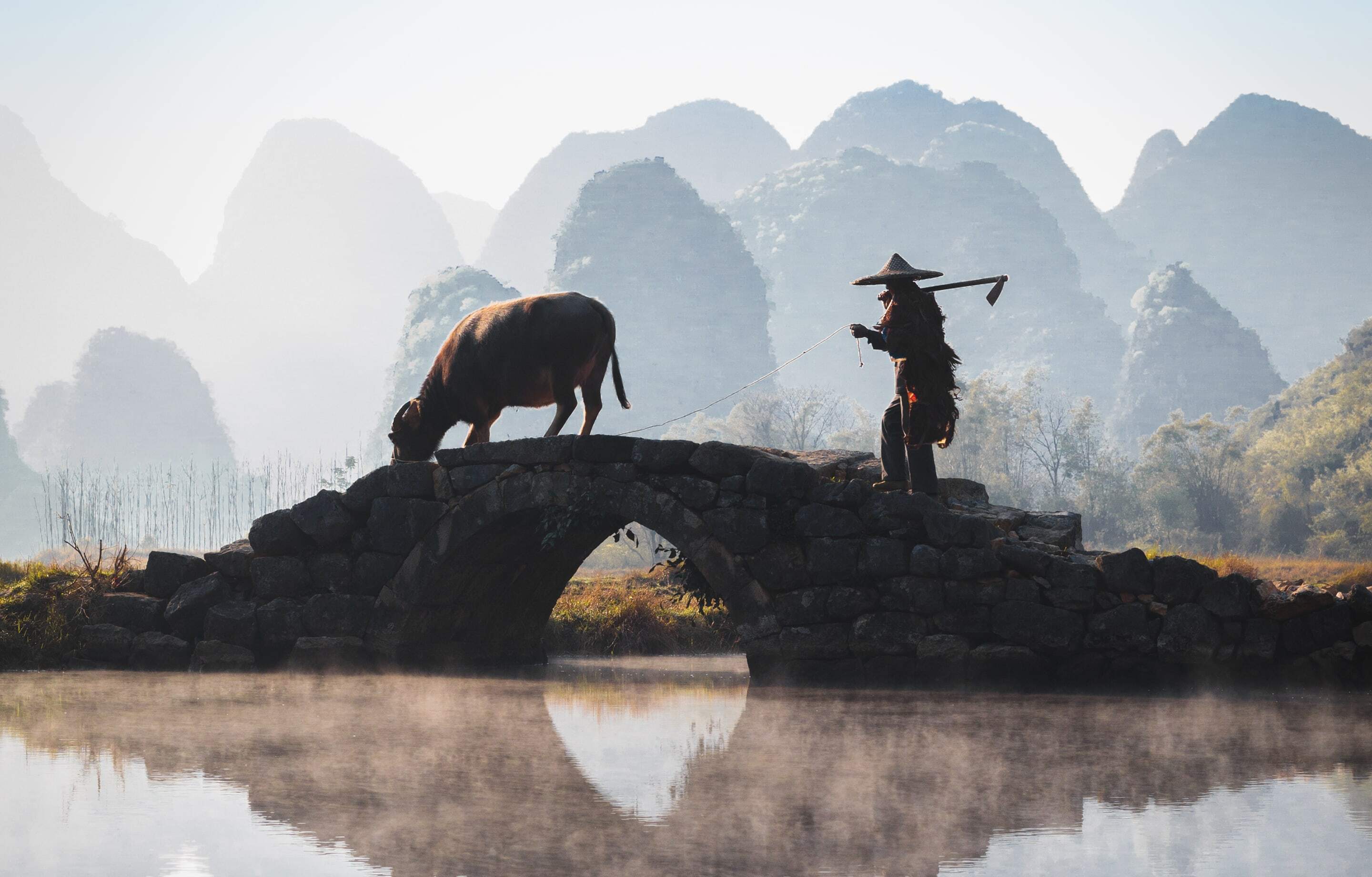
With Remote Lands you'll travel with people who have made Asia the solitary focus of their own lifelong adventure. As our guest, you'll discover Asia on a journey that is completely, authentically your own, adapted from our own remarkable experiences and adventures over the years.
The best time to visit Papua New Guinea is between May and October, when the weather is dry and most of the festivals are held.
Multi-Country Specialists
An Asia-focused magazine brought to you by Remote Lands - a platform for adventure, luxury, and authenticity from experts and explorers around the continent.